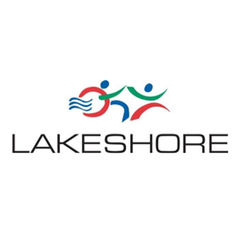|
Key Takeaways This is the third of a five-part series from Lakeshore Foundation that will move through the five domains necessary to provide a comprehensive approach to ensuring that you are offering inclusive fitness programs and that your fitness center is accessible to all individuals, including those with disabilities. Join us as we move through the five domains to ensure your fitness center is welcoming to everyone. Read Parts 1 and 2 here: Read on to discover how carefully considered services can be the key to inclusive and equitable fitness. And, use the step-by-step process to evaluate your current services and make improvements to create an experience that is welcoming to all individuals. |
What Is a Peer Assistant?A peer assistant is someone who is there to help. They do not necessarily need to have an exercise background, but they must be able to follow the instructions and help participants in the class who may need extra attention. For example, the peer assistant could help grab equipment for an individual or help them remember what exercises to do or where to go next in a circuit class. |
Being inclusive with your services is really about taking that bird’s eye view of everything you offer and making sure individuals with a disability can participate. In Part 2 of this series, we covered inclusive instruction and educated staff, which is obviously key, but individuals also need to be able to get to your class and be successful and engaged while they are there. For example, it may be helpful to provide multiple instructors in a class or a peer assistant who can help when needed as the instructor gives instructions.
Also, ensure that your staff uses inclusive language in their classes so that all individuals feel welcome to participate. For example, instead of just saying “walk” or “jog,” they could say “move.” If someone requires an interpreter, that service should be included at no extra charge to them.
Providing accessible transportation or knowing where and how someone could find accessible public transit could be a big benefit for your clients with disabilities who don’t drive.
Your services are what sell your fitness center over the competition. If you aren’t including people with disability in those services, you are missing out on a tremendous opportunity to serve the one in four adults in the U.S. who have a disability—not to mention the revenue that comes with reaching that underserved population.
Along those same lines, it is important to make sure that your advertisements and promotional materials include individuals with disabilities so that all potential customers feel included and are recruited to participate. We recommend that one in four advertisements use inclusive language and imagery, such as a person with a disability exercising. Individuals with a disability will not just assume that you are equipped to work with them, and they shouldn’t have to reach out and ask. Put those marketing dollars to work by using inclusive promotional materials.
Inclusion Solutions
Consider taking the following steps to improve the inclusivity of the services you offer:
-
Look into accessible transportation in your area and see if there is a current gap.
-
Provide inclusive and adapted classes wherever appropriate.
-
Provide opportunities for interns, students or other members to serve as peer assistants.
-
Make sure one in four of your marketing and communication materials is inclusive in both images and language.
-
Survey the disability community to see if your current services meet their needs.
Resources
Check out this blog to learn more about Lakeshore Foundation and Serving Clients with Disabilities. And be sure to read Parts 1 and 2 of this series:




 by
by 







 by
by